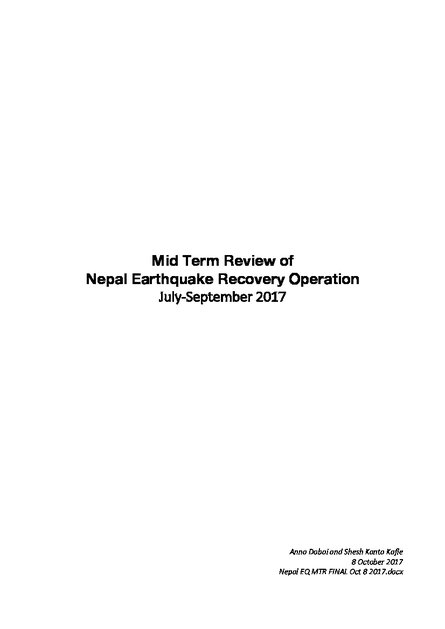
An earthquake measuring 7.8 magnitude struck an area between Kathmandu and Pokhara on the morning of 25 April 2015 which was felt across 57 of Nepal’s 75 districts and a series of aftershocks caused further damage and loss of life. The combined impact caused the death of at least 8,856 people, injured more than 18,000 people and caused extensive destruction and damage to housing and livelihoods affecting more than 1.1 million families, with 700,000 families displaced, 600,000 houses fully destroyed and a further 280,000 damaged, together with schools, health facilities, bridges and roads.
Following initial emergency relief activities, the Nepal Red Cross Society (NRCS), with the support of the Red Cross Red Crescent Movement (IFRC, ICRC and 10 partner National Societies in-country) is supporting recovery activities in the 14 government identified priority districts through a Movement Recovery Plan agreed in June 2016 which built on the Recovery Framework endorsed at a partnership meeting in June 2015. This plan aimed to ensure a coherent Movement-wide approach under the leadership of NRCS. The plan promotes an integrated approach bringing together shelter, water, sanitation and hygiene promotion (WASH), livelihoods and health activities, together with NRCS institutional capacity building (the so-called “4 + 1” approach).
The roll out of the plan has been considerably delayed, due both to external factors related to the creation of the National Reconstruction Authority (NRA) by the Government of Nepal (GoN) and the development of policies to guide the recovery process, but also internal factors as the NRCS and RCM similarly scaled up its capacity to respond to the challenges of delivering a large scale recovery programme across many districts.
